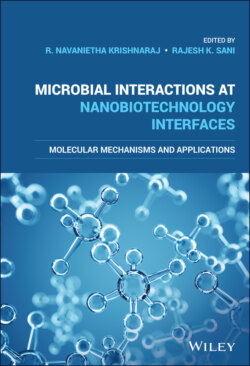Читать книгу Microbial Interactions at Nanobiotechnology Interfaces - Группа авторов - Страница 53
1.10.6 Environmental Conditions
ОглавлениеVarious environmental factors have shown influence over the antimicrobial property of NMs. Among different environmental conditions, temperature causes significant effect on the antimicrobial property because of its influence on ROS production rate. The stimulation of ZnO NMs with temperature resulted in the generation of electrons at the active site. Later the electrons interact with oxygen to generate ROS, which enhances the antimicrobial efficiency of ZnO NMs (Saliani, Jalal, & Goharshadi, 2015). Next to temperature, pH is another very common factor that has a strong influence over the antimicrobial efficacy of NMs. In the case of ZnO NMs, with decrease in pH the dissolution rate of the NMs increases, thereby increasing its antimicrobial properties. Adding to pH, the osmotic pressure of the medium also influences the behavior of NMs, such as the aggregation, surface charge, and solubility of NMs (Saliani et al., 2015). A study of ZnO in five different mediums suggested that the antimicrobial activity of NMs is mainly caused by the Zn2+ ions and the complexes of zinc. Additionally, by supplying the nutrients and other substances, the medium improves the tolerance of bacteria to the NMs (Li, Zhu, & Lin, 2011). Another study showed that stirring conditions of ZnO NPs during the synthesis phase has influence over their antimicrobial property against Gram‐positive (Bacillus subtilis) bacteria, Gram‐negative bacteria (E. coli), and fungus (Candida albicans) (Khan et al., 2016). Schematic of the key factors that contribute to the antimicrobial property of NMs is given in Figure 1.6 as described by Jagadeeshan and Parsanathan (2019).
Figure 1.6 Schematic of the key factors that contribute to the antimicrobial property of NMs.
